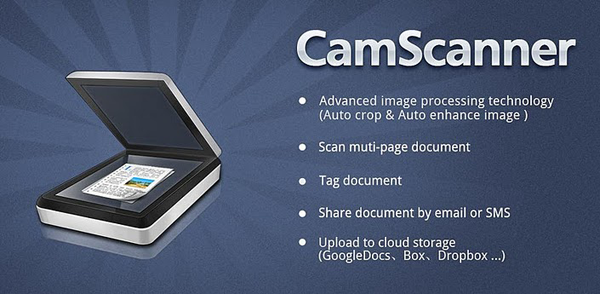Today’s mobile app marketplaces are ferociously competitive. Commanding even a modest upfront price tag on a well-designed app often seems like a risky move. Some developers are moving toward alternative monetization models like “freemium” plans and in-app purchases. The concept of “try before you buy” is hardly a new one, but modern technology offers some unique twists on this old marketing model.
Offering a robust free app is a proven method for conquering mobile competition and winning customer trust, but it doesn’t reward the developer for their investment of time and money. Quite a few mobile apps ranging from games to strictly-business productivity apps have struck the difficult balance of besting their competition in the app market, building a large user base, and simultaneously reaping a solid return on thier investment. Let’s look at a few examples of apps with well-designed in-app purchase models.
CamScanner

The CamScanner app for iOS and Android is a remarkably versatile app that allows multi-page scanning straight from your smartphone. Even the free version offers serious functionality to professionals who need to digitize documents quickly and easily. Users can scan documents, align and crop them digitally, and email them directly from the app. As an in-app purchase, CamScanner offers fax technology that enables users to send their digitized documents to fax machines. This impressive app can effectively replace a scanner, but equally impressive is the in-app purchase of faxing, which effectively replaces a fax machine as well. This in-app purchase serves as an attractive complement to a free, fully-functional app that already has all of your important documents on file and ready to fax.
CSR Racing

This popular racing game garners a 5-star rating and is free to download, offering little reason to refrain from trying it. While the game itself is free, in-game currencies and vehicle upgrades as sold as in-app purchases for real-world currency. Some of these upgrades cost upward of $50. If those in-app purchase prices sound too steep to be a viable profit strategy, consider this: NaturalMotion Games Limited, the creator of CSR Racing made $12 million in a single month exclusively through in-app purchases.
Best Practices for In-App Purchases
If you examine mobile apps with effective in-app purchase models, you’ll find quite a few commonalities. The technique has proven to be effective for a vast variety of app types, but they all shared the following qualities:
- The free apps are fully-functional and offer value before any in-app purchase is made. This may seem counterintuitive to many mobile marketers, and old-school salesman might feel that offering full functionality and simply hoping that the customer takes you up on in-app purchases is a perilously risky model that could sink and entire mobile project. But, from a purely objective standpoint, it seems to work. Games and business apps alike have been able to thrive exclusively on in-app purchases that are purely supplemental to free apps that are already great.
- The apps make the most of developer tools and recommended techniques. Companies like Apple still get their 30% cut of each in-app purchase, so it should come to no surprise that they offer extensive documentation and developer support to help mobile publishers make the most of this nascent pricing model. Android has its own set of helpful developer resources, which serves as another testament that the curators of these mobile platforms like the business model as much as the customers and end users.
- The apps are impeccably designed. Offering an app as a free download is a great way to get it installed on customer’s mobile devices, but in order to persuade them to make in-app purchases, your free offerings have to be truly impressive—not just free. Case in point: the two examples above (CamScanner and CSR Racing) both boast stellar ratings. If your app doesn’t garner a similar response from customers, it’s likely not ready to reward you with in-app purchases, and your time is better spent refining the app instead of monetizing it.
Conclusion
In-app purchases (IAP) offer a new and notable option when it comes to competing with similar apps, convincing customers to download your app, and reaping fiscal rewards from your hard work. It only works well under the right conditions, but examples prove that it has immense potential. Developers that implement this technique properly and carefully can end up with wildly-popular, seriously-lucrative mobile applications.
Have you considered implementing an in-app purchase model for your mobile apps? Does it favor the customer too much, or is it an overlooked opportunity for mobile developers to win customers and unlock unprecedented earnings?
 Peter North
Peter NorthPeter is Chief Digital Officer of CuriosityStream, a multi-platform nonfiction streaming service by the founder of Discovery Communications (Discovery Channel, Science Channel, Animal Planet, etc.). Peter is also Co-Founder of True North, a management consulting firm and digital marketing agency with clientele that includes WebMD and Salesforce.


